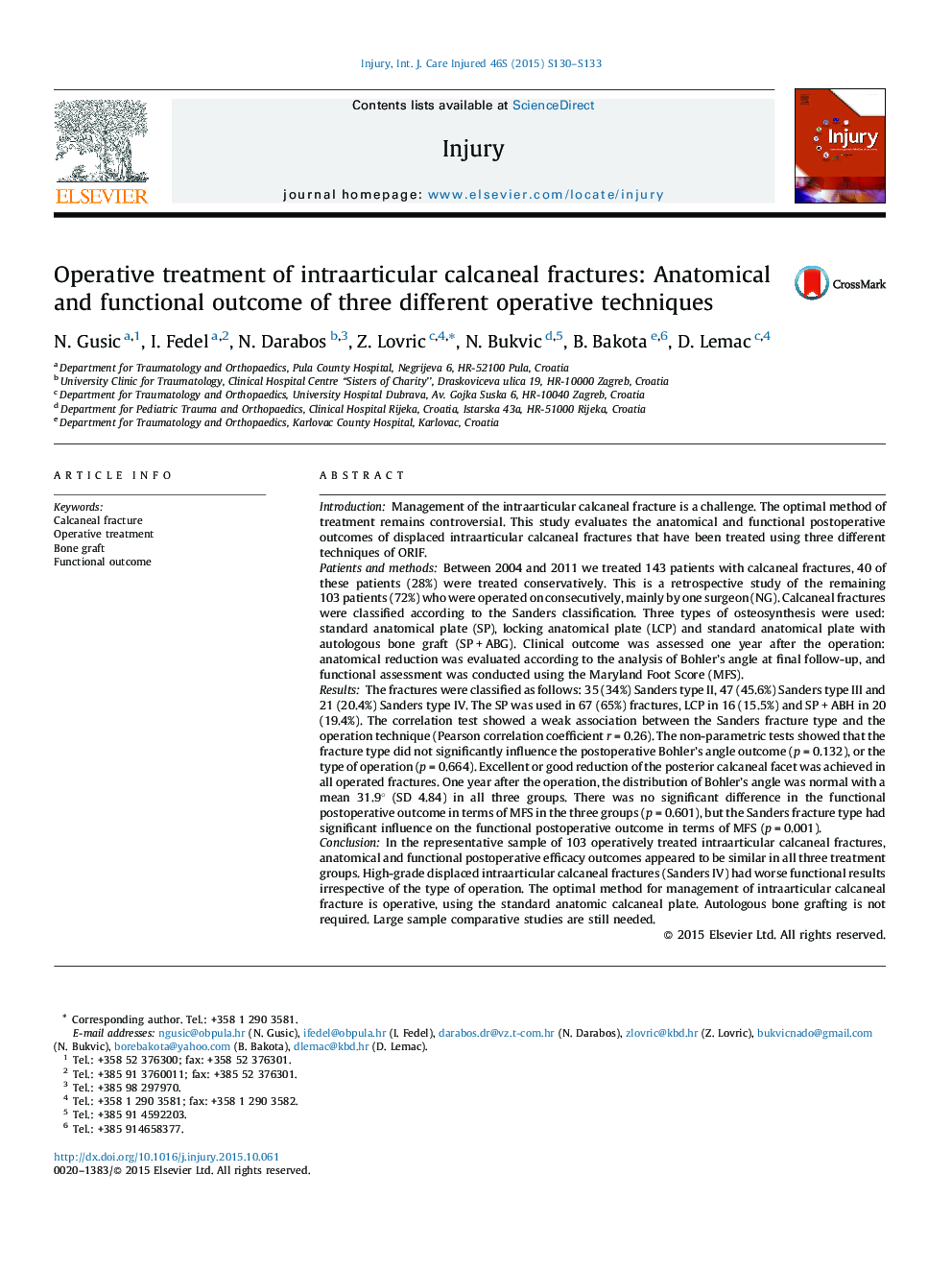| کد مقاله | کد نشریه | سال انتشار | مقاله انگلیسی | نسخه تمام متن |
|---|---|---|---|---|
| 3239305 | 1205995 | 2015 | 4 صفحه PDF | دانلود رایگان |
IntroductionManagement of the intraarticular calcaneal fracture is a challenge. The optimal method of treatment remains controversial. This study evaluates the anatomical and functional postoperative outcomes of displaced intraarticular calcaneal fractures that have been treated using three different techniques of ORIF.Patients and methodsBetween 2004 and 2011 we treated 143 patients with calcaneal fractures, 40 of these patients (28%) were treated conservatively. This is a retrospective study of the remaining 103 patients (72%) who were operated on consecutively, mainly by one surgeon (NG). Calcaneal fractures were classified according to the Sanders classification. Three types of osteosynthesis were used: standard anatomical plate (SP), locking anatomical plate (LCP) and standard anatomical plate with autologous bone graft (SP + ABG). Clinical outcome was assessed one year after the operation: anatomical reduction was evaluated according to the analysis of Bohler's angle at final follow-up, and functional assessment was conducted using the Maryland Foot Score (MFS).ResultsThe fractures were classified as follows: 35 (34%) Sanders type II, 47 (45.6%) Sanders type III and 21 (20.4%) Sanders type IV. The SP was used in 67 (65%) fractures, LCP in 16 (15.5%) and SP + ABH in 20 (19.4%). The correlation test showed a weak association between the Sanders fracture type and the operation technique (Pearson correlation coefficient r = 0.26). The non-parametric tests showed that the fracture type did not significantly influence the postoperative Bohler's angle outcome (p = 0.132), or the type of operation (p = 0.664). Excellent or good reduction of the posterior calcaneal facet was achieved in all operated fractures. One year after the operation, the distribution of Bohler's angle was normal with a mean 31.9° (SD 4.84) in all three groups. There was no significant difference in the functional postoperative outcome in terms of MFS in the three groups (p = 0.601), but the Sanders fracture type had significant influence on the functional postoperative outcome in terms of MFS (p = 0.001).ConclusionIn the representative sample of 103 operatively treated intraarticular calcaneal fractures, anatomical and functional postoperative efficacy outcomes appeared to be similar in all three treatment groups. High-grade displaced intraarticular calcaneal fractures (Sanders IV) had worse functional results irrespective of the type of operation. The optimal method for management of intraarticular calcaneal fracture is operative, using the standard anatomic calcaneal plate. Autologous bone grafting is not required. Large sample comparative studies are still needed.
Journal: Injury - Volume 46, Supplement 6, November 2015, Pages S130–S133
